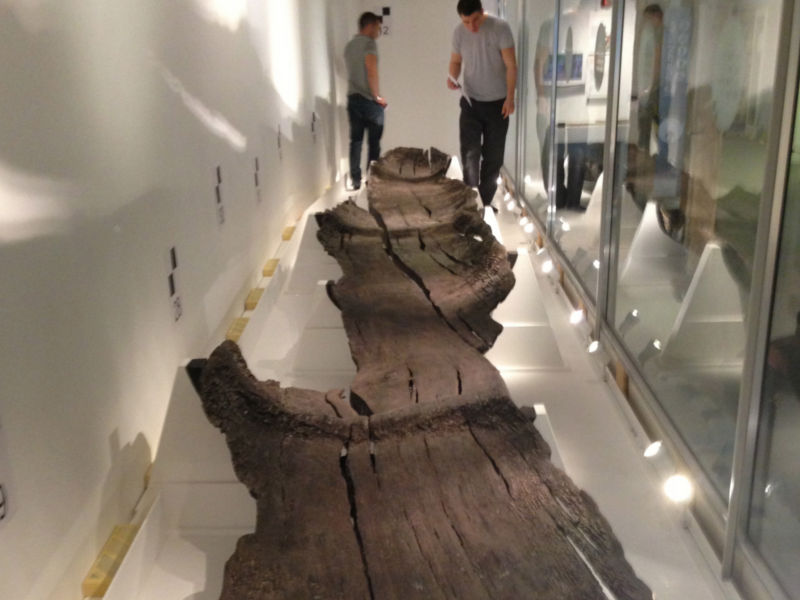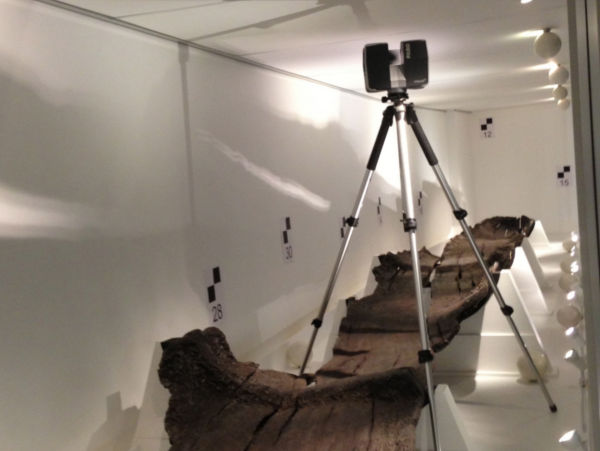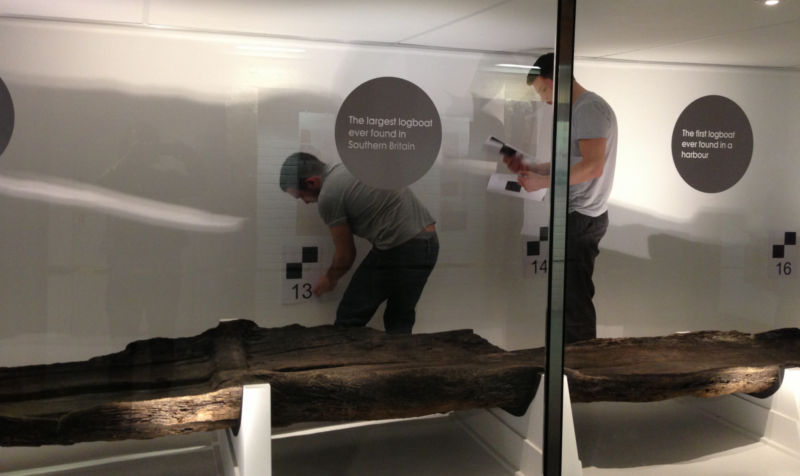The Poole Iron Age logboat project

The Poole Iron Age logboat project is complete. A monograph on this internationally significant object is published by Archaeopress and available to buy either as a pdf or a hard copy.

The Poole Iron Age logboat monograph
Because of its fragility and confined position within the glass case at Poole Museum, the vessel could not be moved so, to digitally record the vessel, an innovative approach had to be found.
The Consortium
1st Horizon Surveying & Engineering, Bournemouth University, Pat Tanner, an expert in the digital reconstruction and 3D modelling of vessels and MAST developed the methodology.
The Technology
Other known digital recording technologies such as a Faro Arm would have been unable to access the narrow parts underneath the vessel. However a Faro3D laser scanner was the ideal kit for the job to capture a full and complete point cloud of the vessel to a +/- 2mm single point accuracy and a +/- 3 to 4mmm across the entire project. The scanning was carried out by 1rst Horizon Surveying & Engineering.
The Logboat
The Poole logboat lies in a majestic position in the entrance at Poole Museum in Dorset. It is one of the largest prehistoric water craft to survive in the UK. Scientific dating by the radio carbon method has provided it with a date of BC 295 ± 50 (RC), dating it to the Iron Age.
Now, thanks to very generous donations from the Robert Braithwaite's Autumn Trust, the Gosling Foundation, The Headley Trust and the Valentine Charitable Trust we were able to complete the digital recording of the vessel and meet the publication costs of the monograph.
The new publication, with work carried out by leaders in their fields, includes distinct chapters on the archaeological and historical background, the environmental context, the timber science and ship science aspects, its conservation and a section on its interpretation and public display. There is a foreword by Professor Sean McGrail. The monograph will contribute enormously to our, until now, fairly limited knowledge of prehistoric craft.







